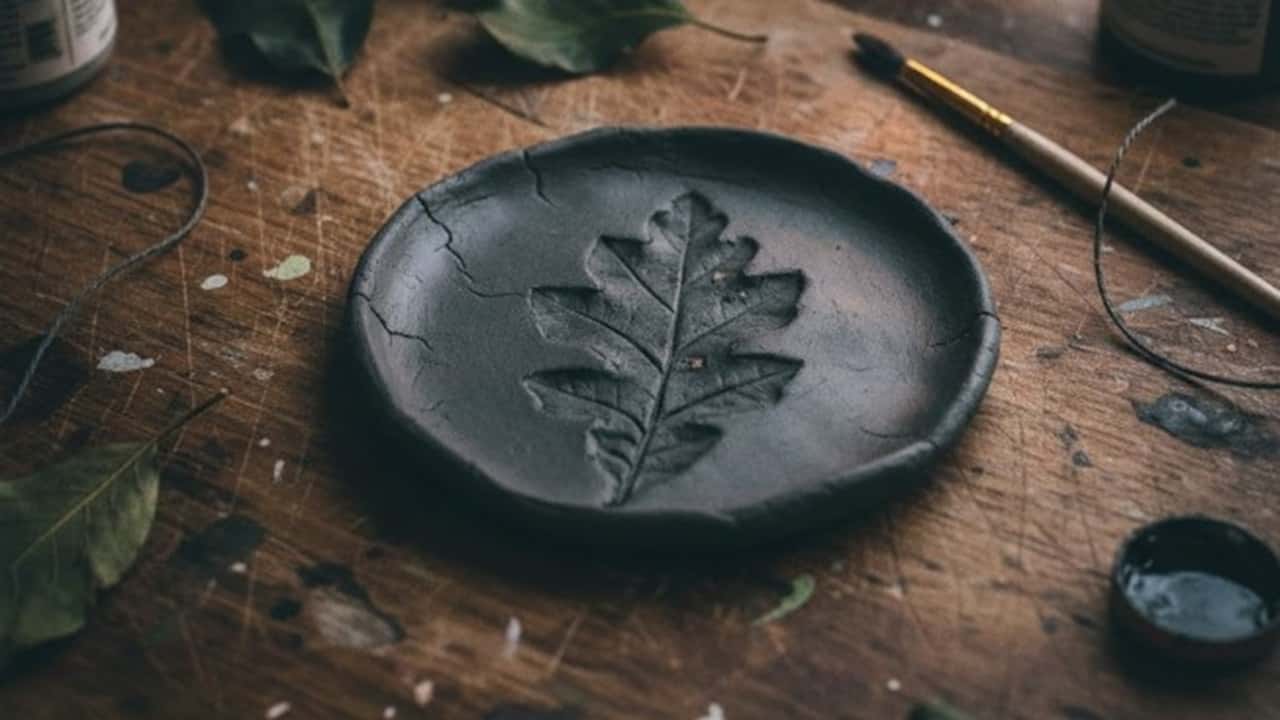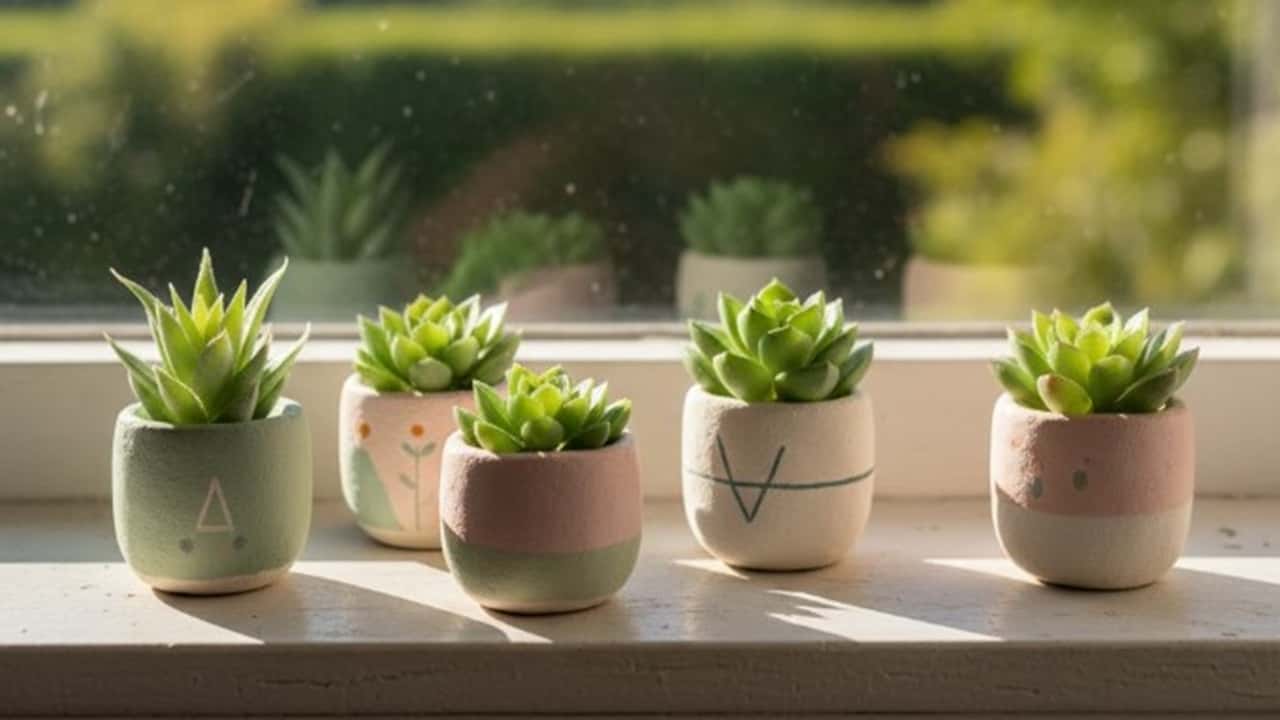A green and white garden creates a timeless sanctuary where verdant textures meet pristine blooms in perfect harmony.
This classic color combination offers endless design possibilities while maintaining a sense of calm sophistication.
Whether you’re working with a small courtyard or sprawling landscape, these budget-friendly green and white garden ideas transform ordinary spaces into elegant retreats.
From structural evergreens to glowing evening displays, discover how this refined palette can elevate your outdoor space with surprising simplicity.
1. Evergreen Anchors Provide Structure
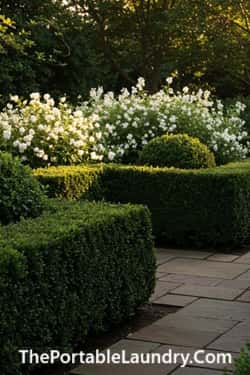
Establish a strong backbone for your garden using evergreens.
These plants offer year-round verdant presence, a constant against which the whites can truly pop.
Consider clipped boxwood hedges for formality, or perhaps the softer form of rhododendrons (choose varieties with deep green leaves).
This foundational green ensures the garden never looks bare.
2. Cascades of Classic White Blooms
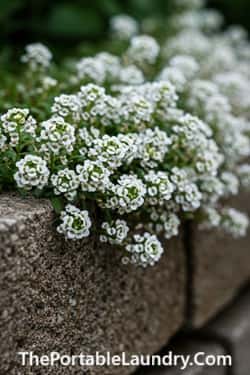
Introduce purity and light through flowering perennials and annuals in shades of white.
Think about the delightful spread of white alyssum spilling over edges; it’s such a charming effect.
Then you have taller accents like elegant white foxgloves reaching skyward, offering vertical drama.
These blossoms are the stars against the green backdrop.
3. Foliage Isn’t Just Green Anymore
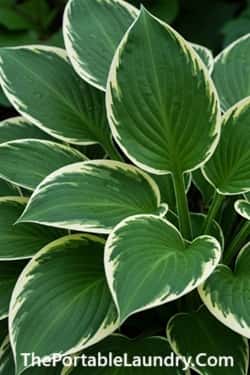
Don’t rely solely on flowers for your white elements; variegated foliage works wonders.
Plants like Hosta ‘Patriot’ or ‘Fire and Ice’ boast leaves dramatically edged or splashed with creamy white, contributing brightness even when not in bloom.
This approach provides visual complexity. It really diversifies the white presentation throughout the space.
4. A Symphony of Textures

Combine diverse leaf shapes and textures for a garden that invites touch and closer inspection.
Place the fine, feathery foliage of ferns near the broad, smooth leaves of hostas.
Contrast these against the spiky architecture of yucca or the glossy finish of laurel leaves.
This interplay between different surfaces creates a richer, more engaging green and white tapestry.
5. Incorporate White Hardscaping Elements
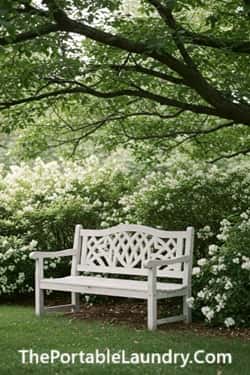
Structural components can reinforce your color scheme beautifully.
A pristine white-painted wooden arbor creates an enchanting entrance or focal point.
Maybe add a classic white bench nestled amongst the greenery, offering a tranquil spot for contemplation.
These non-plant elements provide crisp definition and anchor the design.
6. Masterful Layering for Depth
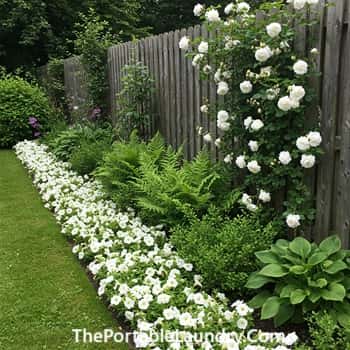
Build dimension by arranging plants in layers based on height.
Use low-growing white groundcovers like Candytuft at the front of borders.
Behind them, position mid-height selections such as white Astilbe or Impatiens.
Finally, taller shrubs or white climbing roses against a wall provide a stunning backdrop.
This technique gives the garden a lush, full appearance.
7. Ensuring Year-Round Visual Appeal
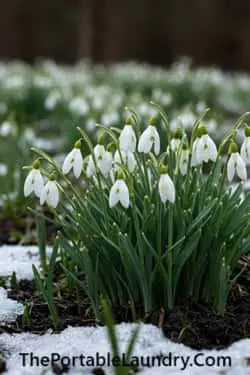
Plan carefully so your green and white theme holds strong through all seasons.
Utilize early spring bulbs like snowdrops and white tulips.
Follow with summer’s abundance of white roses and hydrangeas.
Extend interest into autumn with white Anemones and the changing foliage of certain shrubs, ensuring winter structure with those key evergreens and perhaps white-barked trees like Birch.
The garden remains captivating constantly.
8. Weaving in Fragrant Whites
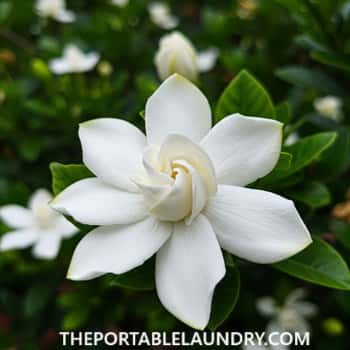
Enhance the sensory experience by including white flowers known for their delightful scents.
Sweetly perfumed Gardenia or Jasmine could climb near a seating area. Consider adding Mock Orange shrubs (Philadelphus) which release an intoxicating fragrance in early summer.
This aromatic dimension makes the garden truly immersive.
9. Ground-Level Green and White Tapestry
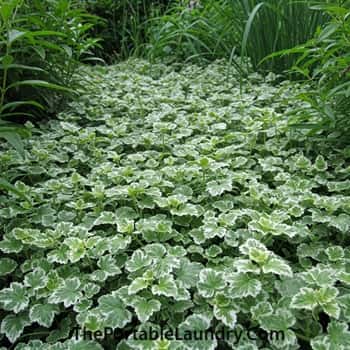
Employ groundcover plants to suppress weeds and unify the design at ground level.
Ajuga reptans ‘Alba’ offers white flower spikes above its green mat.
Alternatively, the silvery-white leaves of Lamium maculatum ‘White Nancy’ brighten shady spots.
These low-growers create a living carpet, connecting larger planting areas.
10. Strategic Container Plantings
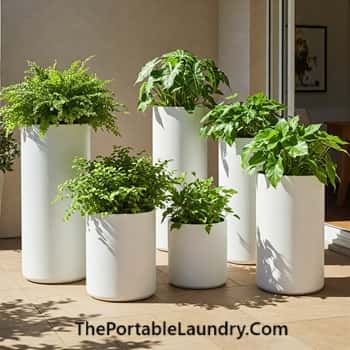
Use pots and containers to add flexible pops of green and white. Plant lush green ferns or hostas in elegant white ceramic pots.
Conversely, fill green or neutral-toned containers with masses of white petunias or calibrachoa.
This allows you to easily update areas or add interest to patios and decks.
11. Evening Glow with White Accents
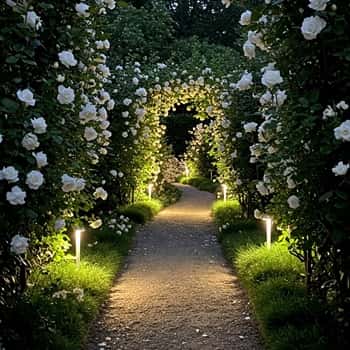
Extend the garden’s enjoyment into the evening hours using subtle lighting.
White landscape lights can uplight trees or highlight pathways, making the white flowers seem to glow in the dusk.
Consider stringing delicate white fairy lights through an arbor or pergola for a magical atmosphere.
The effect transforms the space after sunset.
12. Defining Spaces with Pathways
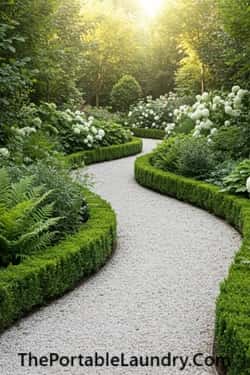
Clearly defined pathways guide movement and enhance the structured feel of a green and white garden.
Use light grey or white gravel for a crisp, clean look that complements the planting.
Alternatively, pale stepping stones set amongst a dense green groundcover offer a softer, more natural transition.
Paths are crucial for navigating the beauty..
13. A Serene Water Element
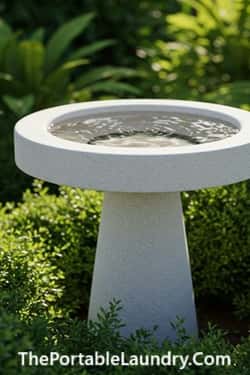
Introduce the calming sound and sight of water with a feature that fits the color scheme.
A simple white ceramic birdbath attracts wildlife and adds a reflective surface.
Perhaps a small, tiered white fountain could become a gentle focal point, its quiet burble enhancing the garden’s tranquility.
Water brings another layer of life.
14. Creating a Striking Focal Point
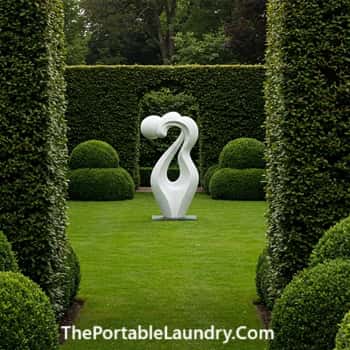
Direct the eye and add a touch of drama with a carefully chosen focal point.
This could be a statuesque plant with striking white variegation or form, like a variegated Cornus controversa ‘Variegata’.
Another option is a piece of white sculpture or a classic urn strategically placed. This central element provides a visual anchor.
15. Crisp Edging for a Polished Finish
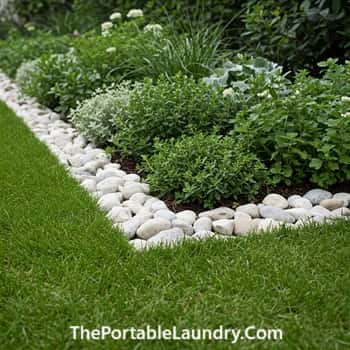
Define the edges of your garden beds for a neat, professional appearance.
Use low, clipped green hedges like dwarf boxwood for a formal feel.
Alternatively, install a border of white pebbles or small white stones to clearly separate lawns or paths from the planted areas.
Sharp edges make the green and white contrast even more impactful.
Final Thoughts
The magic of a green and white garden lies not just in its visual appeal, but in its remarkable versatility.
This palette works across garden styles from formal to cottage, thriving in both sun and shade.
What’s often overlooked is how this seemingly limited scheme actually trains your eye to appreciate subtle differences – the countless shades of green, the varying tones of white from crisp snow to warm cream.
This heightened awareness transforms how you experience all gardens. As seasons progress, you’ll witness your space shifting dramatically while maintaining its cohesive identity.
The restraint in color creates a canvas where texture, form and light become the true storytellers. In embracing green and white, you’re not limiting possibilities – you’re refining them.



